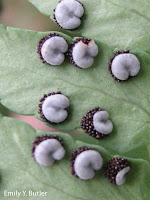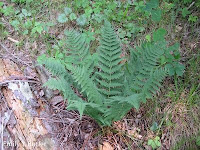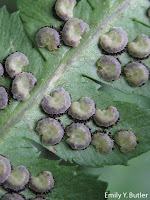Hello! I apologize for the two-month hiatus, it was unintentional. Classes and research slowly hijacked my every waking moment this semester, and as the cold and snow settled in here in Wisconsin, there was less and less to talk about in terms of living plants. However, I did get to work on a really cool project for a plant anatomy course I took this fall, which I wanted to share. Along with one of my labmates and another grad student in our department, I undertook a study of the spores of Dryopteris (my research group), to satisfy the class's project requirement. We got to learn how to use the scanning electron microscope that lives in the botany building, and got some beautiful results. Above is a scattering of spores from Dryopteris marginalis, and below is a figure from the paper we wrote:
A = D. arguta, B = D. carthusiana, C = D. celsa, D = D. cristata, E = D. expansa, F = D. filix-mas, G = D. fragrans, H = D. goldiana, I = D. intermedia, and J = D. marginalis. The scale bar is 20 micrometers... really small! It was a fun project, and the results may prove useful to me down the road in my research. I'll try to post more often over the winter break, if I can find anything living to photograph! Happy Holidays!


















































